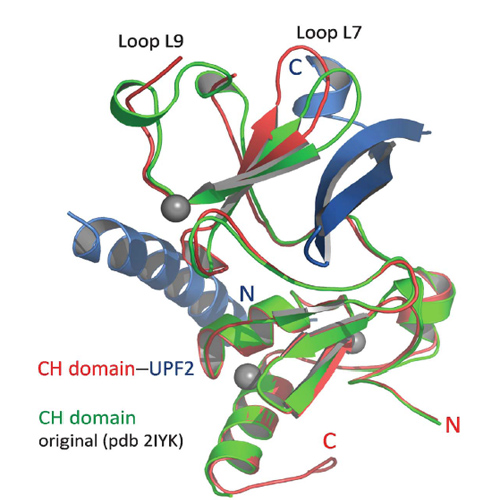Unusual bipartite mode of interaction between the nonsense-mediated decay factors, UPF1 and UPF2.
25-Jun-2009
EMBO J., 2009, 28(15), 2293-2306, doi:10.1038/emboj.2009.175 published on 25.06.2009
EMBO J., online article
EMBO J., online article
Nonsense-mediated decay (NMD) is a eukaryotic quality control mechanism that degrades mRNAs carrying premature stop codons. In mammalian cells, NMD is triggered when UPF2 bound to UPF3 on a downstream exon junction complex interacts with UPF1 bound to a stalled ribosome. We report structural studies on the interaction between the C-terminal region of UPF2 and intact UPF1. Crystal structures, confirmed by EM and SAXS, show that the UPF1 CH-domain is docked onto its helicase domain in a fixed configuration. The C-terminal region of UPF2 is natively unfolded but binds through separated -helical and -hairpin elements to the UPF1 CH-domain. The -helical region binds sixfold more weakly than the -hairpin, whereas the combined elements bind 80-fold more tightly. Cellular assays show that NMD is severely affected by mutations disrupting the beta-hairpin binding, but not by those only affecting alpha-helix binding. We propose that the bipartite mode of UPF2 binding to UPF1 brings the ribosome and the EJC in close proximity by forming a tight complex after an initial weak encounter with either element.











